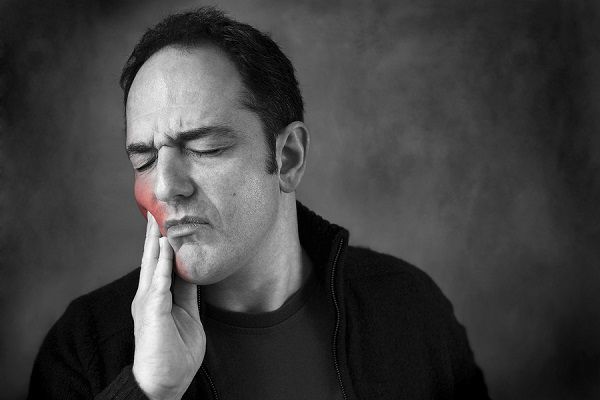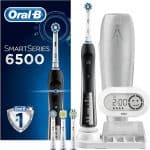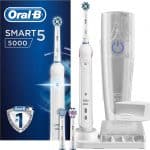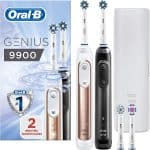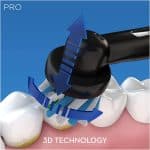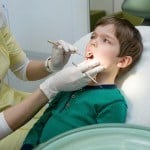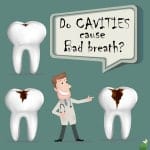Table of Contents
- Causes Of Tooth Pain After Filling
- Remedies for tooth pain after filling
- Use of clove oil
- Use of a Peppermint tea
- Use of a pepper
- Use of hydrogen peroxides solution
- Use of myrrh
- Gargling salt water
- Use of ice pack
- Over-the-counter (OTC) medication
- Use a soft-bristled toothbrush
- Using Fluoride Gel
- Use tooth desensitizing toothpaste
- Correct the dentin sealers, crown or bonding
- Correcting the dental filling procedure
Undeniably, a tooth pain is a common dental problem. No matter who you are, you cannot unsee this.
Notably, after having a dental filling in a damaged or decayed tooth, it is common for the tooth to be sensitive to external stimuli, especially when the anesthetic effect is over, which may cause pain.
However, the pain should subside or dwindle on its own after a few weeks.
Dental fillings are meant to reduce the pain; therefore, if this does not happen, the cause is mainly attributed to the dental filling procedure. A failure by the dentist to perform the procedure effectively may cause a tooth to be painful after the dental filling.
The most common causes of persistent tooth pain after dental filling include:
Causes Of Tooth Pain After Filling
Bonding failure
Bonding failure is one of the main causes of tooth pain after filling. Mostly, it occurs when internal tooth surface or the dentin area where the sealers and the filling material will be inserted becomes contaminated or when it is not etched properly.
As a result, there exist a loose adherence or bonding between the filling material and the tooth tissue.
A minor gap between them allows an external stimulus such as extreme temperatures, which leads to an internal stimulation thereby causing pain. Also, a bonding failure may allow the bacteria to penetrate into the underlying tissues and cause infections.
Structural problems
When the external surfaces of the dental filling material are not smoothed correctly or is irregularly shaped, it may cause irritations to the adjacent teeth or gums, which cause a tooth pain after filling.
Essentially, an internal filling material that is larger than the filling gap will exert a force on the adjacent tooth leading to a toothache. Also, it may increase the risk of infections and caries on the adjacent tooth which will further accelerate the dental problem.
Infected pulp tissue
More often, a toothache may occur after filling when at any chance, the pulp tissue have been infected by bacteria. In case the decayed tissue was not removed during the filling procedure, it may infect the pulp cavity leading to an internal decay that continues even after the dental filling is over.
This condition can cause a severe tooth pain.
High filling placement
A high filling placement, mainly after an incorrect bite is a common cause of tooth pain after filling; mostly, it occurs when the dental filling becomes raised above the original tooth or when the fillings are not shaped perfectly.
As a result, when you bite down, the biting force is not felt evenly across all teeth; rather, most of it is concentrated on the filled tooth or one of its cusps.
This uneven and intense pressure on the tooth may cause an excessive tooth pain.
Allergic reaction
Allergic reaction to amalgam filling is a rare complication but it does occur at times; essentially, it is a condition where the dental filling material such as mercury or silver used in the amalgam filling trigger an allergic reaction, which cause pain.
Similar symptoms of the allergic reactions may include itching or rash that accompanies a toothache dental filling.
Damaged pulp
During the dental filling procedure, the dentist may use invasive methods that may cause severe damage to the pulp. Though some minor sensations on the pulp tissues do happen, an intense filling procedure closer to the pulp may lead to a tooth pain.
In essence, intensive laser treatment or excessive use of a high-speed drilling may affect the nerves points inside the pulp, which creates painful sensations that may even persist after the filling procedure.
Deteriorating fillings
A Deteriorating filling may occur after constant and continuous pressure resulting from actions such chewing, grinding or clenching; the pressure makes the dental fillings wear and tear or even chip or crack. When the dental filling seal wears, this may allow the food particles and bacteria to enter, causing infections to the dental pulp and results to a toothache.
Oral galvanic reaction.
If two different dental fillings such as silver amalgam filling and another type of amalgam filling in the teeth come into contact, it may create an electrical reaction, which can lead to tooth pain.
Remedies for tooth pain after filling
It is important to note that, the remedies of tooth pain after dental filling mainly involve correcting the cause of the dental pain. Besides, some dental homemade remedies and over-the-counter medications can help alleviate the pain.
Some of these remedies include:
Use of clove oil
Whole Clove oil contains potent anti-bacterial and numbing effect, thus, it acts as a local anesthetic, which helps to relieve the pain and prevent bacterial infections. Take a few amount of whole clove and press them to release the oil; then, gently hold the softened cloves on the infected tooth for an hour.
Use of a Peppermint tea
Peppermint tea is known for its nice flavor and potent numbing effects; prepare a peppermint solution and swish it around in the painful tooth; repeat this for sometimes in a day until the pain subside.
Use of a pepper
A paste of powdered ginger or pepper can provide an efficient pain relief; gently place a few drops of these ingredients on your painful tooth.
Use of hydrogen peroxides solution
Hydrogen peroxide solution can provide efficient temporal relief, especially when a fever and a foul taste in the mouth accompanies a toothache; it helps destroy the bacteria and lessen some discomfort. Take a mouthful of 3% hydrogen peroxide solution and rinse the mouth and then spit it out; then wash your mouth using plain water.
Use of myrrh
The astringent property of myrrh provides anti-inflammatory and anti-bacterial effects. Make a solution of powdered myrrh and apply it on the painful tooth five to six times a day.
Gargling salt water
Salt water can be an effective way of treating the pain; it helps to cleanse the area around the tooth and removes the internal fluids that cause swelling. To prepare this remedy, stir two tablespoons of salt in a glass of warm water, and rinse the mouth for a minute.
See also: How To Gargle With Salt Water?
Use of ice pack
Ice helps to numb the painful tooth and reduce the perception of pain. Besides, it helps to minimize any swelling around the tooth that may have occurred after the dental filling work.
Over-the-counter (OTC) medication
In case the pain occurs immediately after the dental filling work, the dentist may prescribe to you some of the Over-the-counter remedies to help alleviate the pain. Some of these OTC painkillers include aspirin and numbing gels. If the pain is severe and persist, stronger pain medication may need to be prescribed.
Use a soft-bristled toothbrush
Using a soft-bristled toothbrush will help reduce the force and the friction applied to the teeth, which minimize the wear and tear of the dental filling.
See also: Best Manual Toothbrush Review
Using Fluoride Gel
This might amaze you, but fluoride gel can really help in this matter. Don’t trust me, use yourself and see the result.
Use tooth desensitizing toothpaste
It involves the use of toothpaste that contains supplements that help reduce the nerve sensation in the tooth, thus reducing the pain. Use the desensitizing toothpaste for severally to achieve positive results.
See also: Best Toothpaste For Sensitive Teeth
Correct the dentin sealers, crown or bonding
In case, the cause the pain after filling is due to loose bonding between the tooth and the dental filling material, talk with your dentist to have the dental filling corrected. It may involve applying a correctly fitted bonding resin that helps to seal the gap completely. .
Correcting the dental filling procedure
It is used as the last- resort treatment when the teeth pain become more intense and severe even after applying other prevention options. It is an extremely efficient treatment that involves repeating the dental filling procedure to correct the improperly performed procedure and solve the problem completely.
Conclusively, it is worth noting that unless the cause of the teeth pain after filling is determined prior to the treatment or prevention, the tooth pain may not entirely disappear. According to the Cleveland Clinic, though the symptoms may seem to fade away for sometimes, the condition may occur once more at a later date.
Noticeably, there are several types of treatment available, but the ideal method to be used will depend entirely on the cause of the teeth pain after filling.
Therefore, proper and intensive diagnosis is vital to help alleviate the problem.
Advisably, always take note of the initial symptoms that accompanies tooth pain after filling; this will help you get an immediate treatment or prevention before the problem persists and affects your daily activities.
Avoid intentional habits such as hard brushing, use of acidic foods, and inserting piercing substances onto the dental filling surfaces. Most importantly, maintains oral and teeth hygiene.

